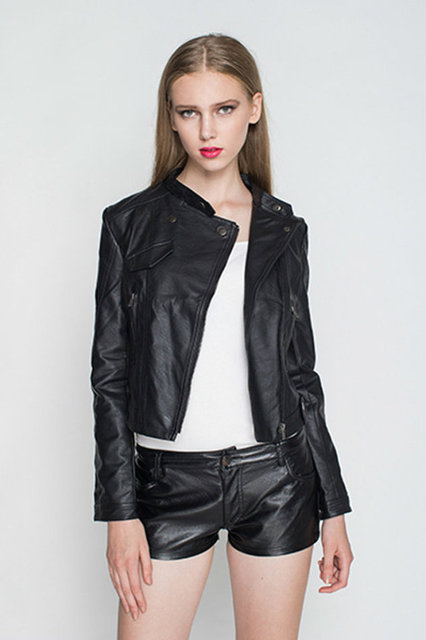In the fashion industry, leather clothing holds a unique position due to its timeless appeal, durability, and versatility. For retailers and businesses looking to stock up on leather clothing, sourcing wholesale options can be a cost-effective and efficient way to meet customer demand. This guide provides a comprehensive roadmap to sourcing wholesale leather clothing, from understanding market trends to establishing long-term supplier relationships.

1. Understand Market Trends and Customer Preferences
Before diving into wholesale sourcing, it’s crucial to understand current market trends and customer preferences.
- Market Research: Stay updated on fashion trends, especially those related to leather clothing. Look for emerging styles, colors, and textures.
- Customer Insights: Analyze your target audience to understand their preferences. Are they looking for classic leather jackets, trendy leather pants, or perhaps vegan leather alternatives?
2. Identify Potential Wholesale Suppliers
With a clear understanding of market trends and customer preferences, it’s time to identify potential wholesale suppliers.
- Online Marketplaces: Platforms like Liuhuamall offer a vast selection of wholesale leather clothing.
- Trade Shows and Exhibitions: Attend fashion trade shows to meet potential suppliers face-to-face and discover new collections.
- Industry Directories: Use fashion industry directories to find suppliers specializing in leather clothing.
3. Evaluate Suppliers
Once you’ve compiled a list of potential suppliers, it’s time to evaluate them based on key criteria.
- Quality and Craftsmanship: Look for suppliers that offer high-quality leather clothing with attention to detail and craftsmanship.
- Pricing and MOQs: Compare pricing and minimum order quantities (MOQs) to find suppliers that fit your budget and order volume.
- Variety and Customization: Choose suppliers that offer a range of styles, sizes, and colors. Consider suppliers that offer customization options to meet specific customer demands.
- Delivery and Shipping: Ensure suppliers offer reliable delivery options and clear shipping timelines.
- Customer Service and Communication: Choose suppliers that respond promptly to inquiries and provide excellent customer service.
4. Establish a Relationship with Suppliers
Building a strong relationship with your suppliers is key to long-term success.
- Initial Contact: Reach out to suppliers via email, phone, or their online contact form. Be clear about your needs and expectations.
- Negotiation: Negotiate on pricing, MOQs, delivery terms, and customization options. Establishing a good rapport can lead to better deals.
- Contract: Once you’ve agreed on terms, ensure you have a written contract outlining all details.
5. Place Orders and Monitor Quality
With a supplier in place, it’s time to place your first order.
- Order Placement: Follow the supplier’s order process, including payment terms and deadlines.
- Quality Control: Implement a quality control process to ensure the products meet your standards. This may involve inspecting samples before bulk production or having a third-party inspector verify quality.
6. Manage Inventory and Fulfillment
Managing inventory and fulfillment efficiently is crucial for maintaining a smooth operation.
- Inventory Tracking: Use inventory management software to track stock levels and orders.
- Fulfillment: Decide whether you’ll handle fulfillment internally or use a third-party logistics (3PL) provider.
7. Review and Adapt
Regularly review your supplier performance and be prepared to adapt.
- Performance Reviews: Assess supplier performance based on quality, delivery times, and customer feedback.
- Feedback Loop: Provide constructive feedback to suppliers to improve future orders.
- Supplier Diversification: Consider diversifying your supplier base to mitigate risks and access a wider range of products.
Example Suppliers
- Alibaba Suppliers: Search for “wholesale leather clothing” on Alibaba to find a variety of suppliers offering competitive pricing and a wide selection.
- U.S.-Based Suppliers: Look into suppliers like Los Angeles Apparel, Wholesale Fashion Square, or leather-specific wholesalers like Leather Up for domestic options with faster shipping and potential for better customer service.
Conclusion
Sourcing wholesale leather clothing can be a rewarding endeavor for fashion retailers and businesses. By following this guide, you’ll be well-equipped to identify market trends, research suppliers, evaluate options, and establish strong relationships that will support your business growth. Remember, the key to success is thorough research, effective communication, and a willingness to adapt. Happy sourcing!